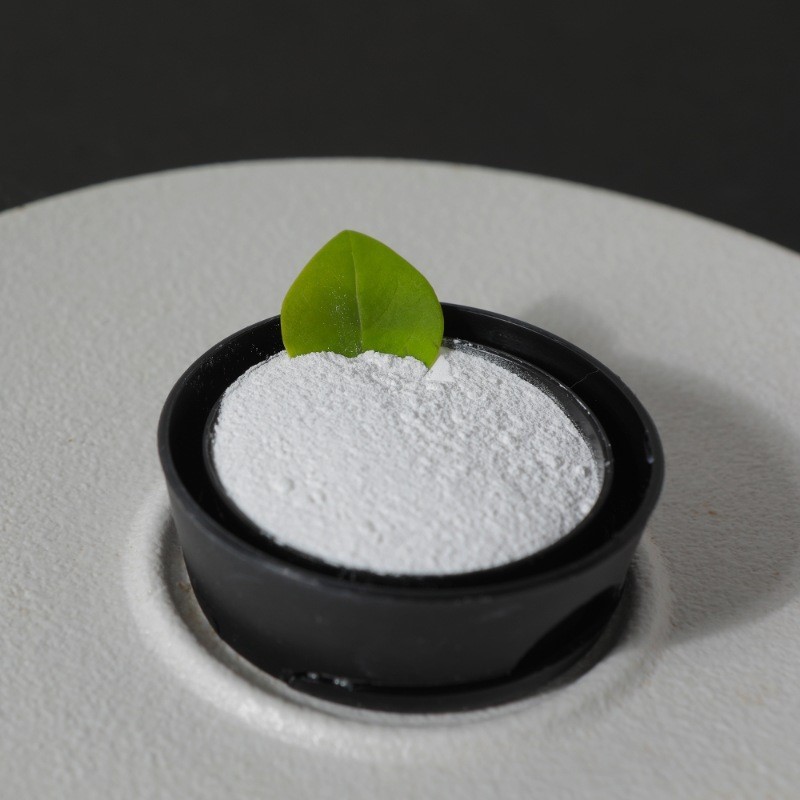Zinc Sulfide
Key words:
Category:
Product Description
physical properties: zinc sulfide is an inorganic compound, chemical formula is ZnS, white or yellowish powder, see light color becomes dark. Soluble in dilute inorganic acid, insoluble in water.
Chemical Properties:
Purity: 98
Hardness Mohs: 3
Composition: ZnS
Average Particle Size μm: 0.30
Density g/cm3 :4.0
Oil Absorption g/100g: 13
Specific Surface Area [m2/g]:8
Conductivity mS/cm :0.2
Brightness: 98
Usage: used as analytical reagent, phosphor, light conductor material. Also used in the manufacture of dyes, paints, pigments, glass, curing oil, etc., can also be used as a variety of filters and laser window coating. In UV coatings, plastics, glass fiber reinforced plastics, elastomers, thermoplastics, etc.
Schwab Zinc Sulfide is a versatile white pigment that is ideal for applications and related performance enhancements in the following areas. 16
★Glass Fiber Reinforced Plastic (GBP) White and Reliability★Plastic white and protective, elastomer white and durability
★UV curing coating white and no curing barrier, metal primer white and anti-corrosion, fluorescent system white and brightness.
★Another advantage: the service life of the processing equipment is much longer than when using conventional rutile TiO2 pigments.
Model: Sachtolith HD-S
Product Features: Low Mohs Hardness Not Destroying Glass Fiber Structure to Reduce Mechanical Loss of Alloy Modification Photocuring Drying Speed Higher than Titanium Dioxide Pigment
Packing Specification: 25Kg Bag
Application: Paint, Coating, Paper, Plastic and Rubber.
Sachtolith HD-S is a white pigment that is synthetic zinc sulfide. The surface is treated with an organic coating.
Typical Performance
★Low Mohs hardness, small wear and good dispersion.
★High purity, no trace elements, good absorption in the near ultraviolet region.
★Color neutral in accordance with VDA List 232-101,EN 71/3,AP 89(1)/AP 96(5) and FDA as per 21 CFR, 178.3297.
★Paints and Coatings
★Suitable for use in abrasion-prone outer coatings and UV solid systems.
★Paper
★Can be used together with fluorescent whitening agent.
★Plastic and rubber
★In glass fiber reinforced plastics,(GRPs) do not affect the mechanical properties. The Sachtolith of
Sachtolith Zinc Sulfide is a commonly used white pigment, second only to titanium dioxide. As a multifunctional white pigment, its blue-phase white phase has a toning effect and can be used in conjunction with fluorescent brighteners to give plastic products qualities and advantages that other white pigments cannot give. 56
★Glass fiber reinforced plastic
★Elastomer
is well suited for coloring and opacifying natural and synthetic elastomers due to its soft Sachtolith and lack of the photocatalytic activity of TiO2. Therefore, the abrasion is very small, and the use of Sachtolith as a pigment white elastomer to produce soles with a much longer service life than those made of TiO2. 62
, as a stabilizer, is Sachtolith also inventively applied to some thermoplastics, especially PP and PBT, to improve the thermal stability of polymers. There is no conclusive explanation as to the mechanism. But we believe that because the Sachtolith can and most of the catalytic effect of the metal ion reaction combined into an immobile complex, to avoid these ions into the polymer lattice produced by the catalytic degradation, that is, Sachtolith so-called "fixed effect".
Sachtolith @ series is a versatile white pigment:
★Plastic white and protective
★Elastomeric white and durability★UV Cure Paint White and No Cure Barrier
★Metal Primer White and Corrosion Protection
★Another advantage of the white and brightness of the fluorescent system: the service life of the processing equipment is much longer than when using conventional rutile TiO2 pigments.
Sachtolith @ is composed of zinc and sulfide, which combine to form: zinc sulfide. Zinc sulfide is an inert substance under normal conditions. Therefore, Sachtolith @ has the following properties:
★Insoluble in water
★Insoluble in organic solvents
Product description:
★Character: white powder
★Molecular formula: ZnS
★Purity: 97.0-99.0
★Particle size: 4.5-5μm
★Melting point: 1700°C
★Toxicity: This product is corrosive. Toxic. Can irritate the skin. Operators shall wear overalls and protective articles. The workshop should be well ventilated.
★Physical and chemical properties: see the light color becomes dark. Stable in dry air, long-standing wet air or containing moisture, gradually oxidized to zinc sulfate. In water solubility is very small, soluble in dilute inorganic acid, soluble in alkali, insoluble in acetic acid. Zinc sulfide in hydrogen sulfide gas flow after burning into crystals, its structural unit, sulfur in zinc atoms constitute a tetrahedron, zinc is also in the sulfur tetrahedron, coordination number is 4. Ammonium sulfide (NH4)2S was added to the zinc salt solution to obtain white zinc sulfide precipitate. It's irritating.
technical parameters
| >96 | color index L * (micropowder) | |
| >97 | sieve residue [%] | |
| <0.004 | pH | |
| Apprpx. 7 | Relative Scattering Force | |
| >52 | Hardness (Mohs) | |
| 3 | Usage: |
★Plastic white and protective
★Elastomer white and durability
★UV Cure Coating White and No Cure Barrier
★Metal Primer White and Corrosion Protection
★Another advantage of the white and brightness of the fluorescent system: the service life of the processing equipment is much longer than when using conventional rutile TiO2 pigments.
packaging and transportation:
are packed in woven bags lined with polyethylene bags. Net weight of each bag is 25kg. Store in ventilated, dry warehouse, avoid open storage. The packaging container must be sealed to prevent moisture. It is not allowed to be stored and mixed with edible articles and feed. Cover shall be provided during transportation. To protect against rain and sun, handle with care when loading and unloading to prevent the package from breaking.
Related Products
Product Inquiry

Shenzhou Jiaxin Chemical Co., Ltd.
Tel: +86-318-3426779
Manager Lu: +86-15028808558
E-mail: lu@hebeijiaxin.com
Address: Qaotou Industrial Zone, Shenzhou City, Hebei Province, China
Copyright © Shenzhou Jiaxin Chemical Co., Ltd.


